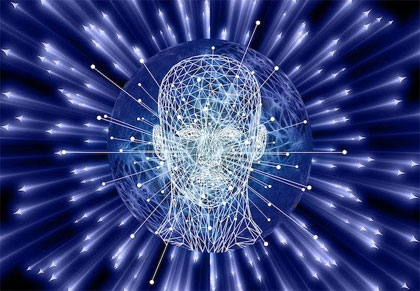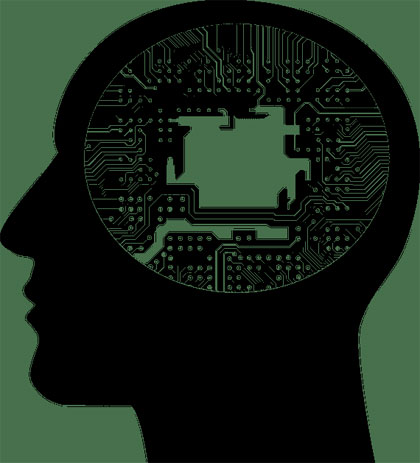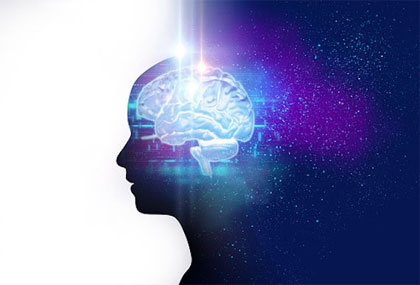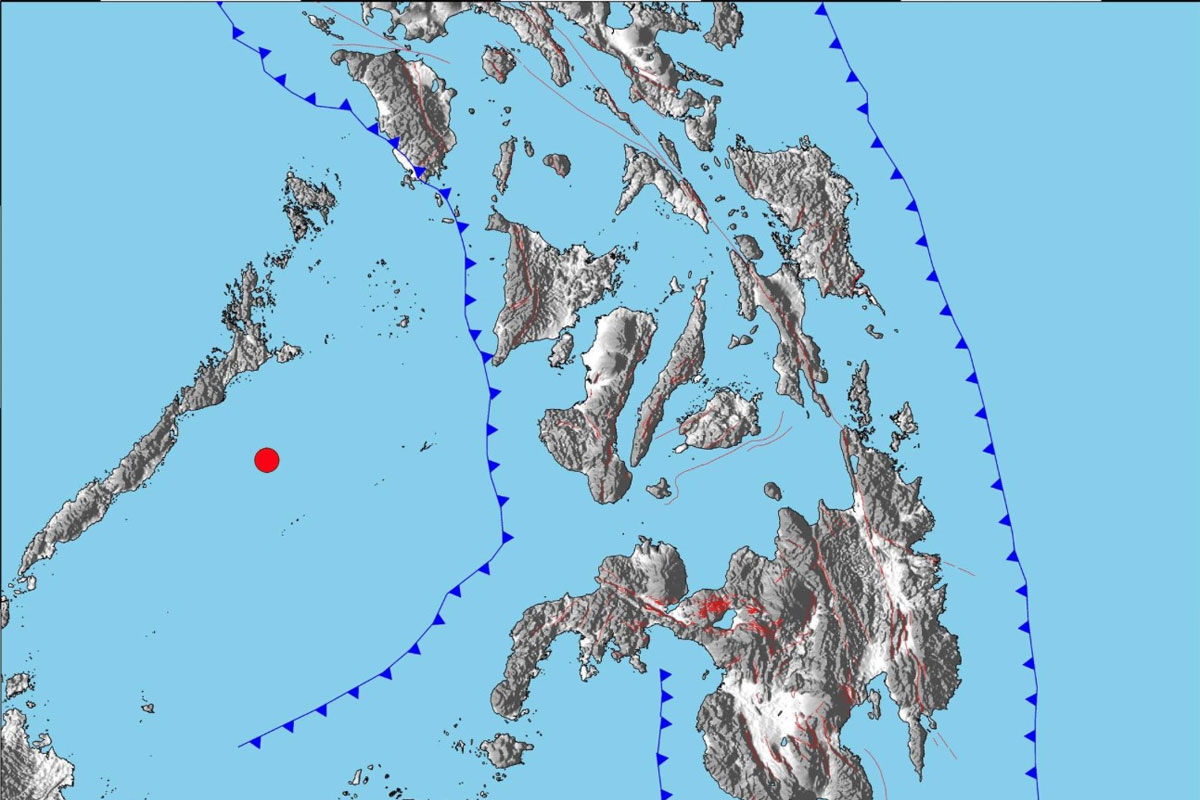
Digital Immortality: Can We Live Forever by Downloading Our Consciousness?
Brent Swancer March 5, 2022
For as long as we have been aware of our own mortality, human beings have sought to extend our life, with the grand prize being to live forever. Through the ages there have been medical breakthroughs quests to find elixirs of immortality, all manner of strange treatments and rituals, and there seems to be nothing we will stop at to just have some more time. One possible answer to this age-old conundrum is that maybe we don’t even need to fix our bodies at all. What if we could just download ourselves into another body altogether, just take our consciousness and put it somewhere else? Long firmly set within the realm of science fiction, the notion of transferring our mind has in recent years been seriously considered and debated, and here we will look at this strange, sometimes scary new frontier.
The concept known as mind uploading, also known as whole brain emulation (WBE), is a hypothetical process wherein a person’s mind, and theoretically their personality and all of their emotions and memories along with it, would be mapped, digitized and transferred into a different form. This different form could be a computer, a robotic body, or even a clone, maybe even shuttled about between all of these, but the same basic principle still applies in that you are taking a digital copy of a mind and placing it in this new medium, where it would hypothetically transfer a whole digital copy of a person’s consciousness along with it. The idea is that the person would retain their personality, experiences, long-term memory, and “self,” essentially theoretically allowing them to live forever outside of their original biological bodies in this new state. It is a compelling notion to be sure, that we could shuck off our mortal forms to live on indefinitely in a computer or new body, which is one of the reasons it is such a prevalent and recurring theme in science fiction books and films, but is it really possible and how would one go about doing it? Let’s take a look.
The short answer to whether mind-uploading is possible is, well, maybe. It is theoretically possible, and does not break any laws of physics, but it’s pretty complicated. In order to get a handle on what we are dealing with here, it is perhaps first important to look at just what it would entail to replicate an actual human brain. The typical human brain regularly uses 86 to 100 billion neurons, with 10,000 or so connections each neuron makes with other neurons, that all function simultaneously in a large, sprawling neural network composed of more than 125 trillion synapses, and that is just in the cerebral cortex alone. In order to accurately map out this incredible complexity, one method would be to scan and map the salient features of a biological brain in order to create what is called a “connectome,” or a complete 3D rendering of the brain down to the last detail. This could be done using an array of electrodes that could be placed on precise areas of the brain either around the skull or surgically implanted within it, known as the copy-and-upload technique. Such electrodes and sensors would need a very sharp 3D resolution of a few nanometers, and could possibly record thousands of neurons at a time and theoretically eventually create a full map of the brain. The problem is all of that vast complexity.
 Science has already managed to create a working connectome in 2014, which sounds promising until you realize that it was made of the brain of a Caenorhabditis elegans roundworm, which has only 302 total neurons in its brain. The team took this map and replicated it as software, after which they uploaded it into a robotic Lego worm capable of all of the same movements as the biological one and turned it on, because what could possibly go wrong? The result was an eerie robotic worm moving about and behaving like a real roundworm, even recoiling from being touched and investigating its surroundings, even moving towards food. This seems to show that the concept is at least feasible, but then remember that this worm had only 302 neurons, whereas humans have 86 billion or more. Could we ever hope to map that many neurons to any appreciable degree? Possibly, but with our current technology it would, as Francis Collins, head of the National Institutes of Health says, “take a million electron microscopes running in parallel for 10 years.” Indeed, it took ten years of meticulous, hard work for researchers to completely map the worm’s brain, let alone a human one, and the process would also have to map not only all of our neurons, but also the cells that carry the electrical impulses, as well as the vast network of synapses that link them all together, and on top of that it would be necessary to determine their exact, precise locations, and trace and catalogue their relations to each other. Additionally, this scan would have to be incredibly precise in order to have any chance of working, and current brain-scanning tech, like MRIs and MEGs, just aren’t good enough to map this all out. It also needs to be pointed out that we still barely understand the human brain enough to even know what we are looking for, with many neurotransmitters yet to even be discovered, let alone have the ability to even start to think about successfully mapping it all.
Science has already managed to create a working connectome in 2014, which sounds promising until you realize that it was made of the brain of a Caenorhabditis elegans roundworm, which has only 302 total neurons in its brain. The team took this map and replicated it as software, after which they uploaded it into a robotic Lego worm capable of all of the same movements as the biological one and turned it on, because what could possibly go wrong? The result was an eerie robotic worm moving about and behaving like a real roundworm, even recoiling from being touched and investigating its surroundings, even moving towards food. This seems to show that the concept is at least feasible, but then remember that this worm had only 302 neurons, whereas humans have 86 billion or more. Could we ever hope to map that many neurons to any appreciable degree? Possibly, but with our current technology it would, as Francis Collins, head of the National Institutes of Health says, “take a million electron microscopes running in parallel for 10 years.” Indeed, it took ten years of meticulous, hard work for researchers to completely map the worm’s brain, let alone a human one, and the process would also have to map not only all of our neurons, but also the cells that carry the electrical impulses, as well as the vast network of synapses that link them all together, and on top of that it would be necessary to determine their exact, precise locations, and trace and catalogue their relations to each other. Additionally, this scan would have to be incredibly precise in order to have any chance of working, and current brain-scanning tech, like MRIs and MEGs, just aren’t good enough to map this all out. It also needs to be pointed out that we still barely understand the human brain enough to even know what we are looking for, with many neurotransmitters yet to even be discovered, let alone have the ability to even start to think about successfully mapping it all.
It is such a mind-boggling complex process that some scientists doubt whether it will ever be possible at all, but still, for the sake of argument let’s just for now imagine that it can be done and that we have our human mind map in hand. The next step would be digitizing the whole thing, and this brings with it its own formidable problems, namely where we would store all of the information. The average human brain is thought to have a memory storage capacity of around 2.5 Petabytes (2,500 TB), and not only would you have to store that somehow, but you would need power to do it and lots of it. To put it into perspective, a computer running with that same amount of memory and processing power would require approximately 1 gigawatt of power, or around the output of a nuclear power plant. That’s a pretty tall order.
But let’s just say, once again, that it is possible, we can do it and we have it stored. We are now ready to upload it, but before we flip that switch to turn it on there are some other things we probably need to think about. As human beings, we are more than just a bunch of synapses and neural connections. Much of our personality and who we are comes from our interactions with the world around us, the things we see, touch, smell, taste, and experience. Our physical sensations and biological needs such as eating, seeking out our needs, even feelings of physical pain, in many ways make us who we are just as much as our brain chemistry, so if we just put a disembodied, conscious mind into a computer, what effect is that going to have on it and how humane would that be? How would a human mind react to being unfettered from all of the needs and experiences that had anchored it in the physical world, shaped it, and driven its very existence? The best solution would be to create a sort of virtual world for these uploaded minds, in which they could inhabit avatars and interact with a world that closely approximates the one they left behind, like in the Matrix films, but this would require even more storage, energy, and processing power. Some even argue that this virtual world would have to be indistinguishable from the one the mind had left behind, lest it go insane. We could also put them into a robotic body, but this body would have to be far more advanced and functional than anything we have now, something that could nearly approximate the functionality and maneuverability of an actual human body. Cloning a new body could be possible, but at this point that seems even more unlikely than anything else.
 Let’s just say we can solve that problem and move on. Can we flip the switch now? Well, hold up just a bit. There are still a lot of factors that suggest flipping that switch might do nothing at all. We still don’t even really understand what a mind really is, or what makes you you. For instance, it is now widely thought that it is not just our brains that make us who we are, but also other biological processes such as our hormones and even our gut bacteria and the 100 million nerve cells in our digestive system, which are thought to profoundly affect our moods and personalities, and can even be the cause of depression and autism. Do we have to copy all of this as well in order to recreate the mind? Also, mind uploading relies on a strictly mechanical view of the mind, the idea that our brain is just more or less a very complex computer, but we still don’t know anything about where actual consciousness comes from. Does that lie in a bunch of neurons, synapses, and electrochemical processes, or is there perhaps more to it, perhaps some quantum phenomena or even some nebulous spark of what we call the soul? We simply don’t know. So how do we define what a mind is in the first place, let alone emulate it? Susan Schneider, of the Department of Philosophy and Cognitive Science Program, The University of Connecticut has given her thoughts on this conundrum:
Let’s just say we can solve that problem and move on. Can we flip the switch now? Well, hold up just a bit. There are still a lot of factors that suggest flipping that switch might do nothing at all. We still don’t even really understand what a mind really is, or what makes you you. For instance, it is now widely thought that it is not just our brains that make us who we are, but also other biological processes such as our hormones and even our gut bacteria and the 100 million nerve cells in our digestive system, which are thought to profoundly affect our moods and personalities, and can even be the cause of depression and autism. Do we have to copy all of this as well in order to recreate the mind? Also, mind uploading relies on a strictly mechanical view of the mind, the idea that our brain is just more or less a very complex computer, but we still don’t know anything about where actual consciousness comes from. Does that lie in a bunch of neurons, synapses, and electrochemical processes, or is there perhaps more to it, perhaps some quantum phenomena or even some nebulous spark of what we call the soul? We simply don’t know. So how do we define what a mind is in the first place, let alone emulate it? Susan Schneider, of the Department of Philosophy and Cognitive Science Program, The University of Connecticut has given her thoughts on this conundrum:
What is a mind? To know whether you survive uploading, it would be important to have a sense of what a mind is. If the mind is just the brain, then, you do not survive. Some say the mind is a program. But a program, like an equation, is an abstract entity. An equation doesn’t exist anywhere, although inscriptions of it do. Presumably, your mind is a concrete thing, having a location. Perhaps you are a program instantiation — some thing, running a program, but what is that thing? This just brings us back to my original question: what is a mind?
Ok, then, well, let’s just assume that the brain is you, and that it is all based on neurons and biomechanical processes. Even then, let’s not flip that switch yet. When we start it up and that mind comes online, is it really you, or just a copy of you? What is “you” anyway? This is a philosophical question that has been discussed for millennia and is far beyond the scope of this article, but the problem here is who would this uploaded consciousness be and could it really even be considered to be human at all or just a fancy AI program? What would awaken when that uploaded mind went online? We don’t know. The questions of what constitute self and identity are ones we have no real clear answers for, and so this would also need to be carefully considered before we ever attempted to try to go through with such a thing. Schneider has said of this:
An upload would not be a homo sapien, so, strictly speaking, it wouldn’t be human, but it may have traits that we think of as “human” in a loose sense, such as rationality and humanlike concerns and emotions. It could be human-like. It might, over time, morph into something far less humanlike, as it becomes immersed in its new environment. This may strike one as incredibly cool, and science fiction-like. Wouldn’t you still be there, on the table, after your brain was scanned and “transfered” to a program? Why would your mind “shift” from your brain to the computer, leaving your still working biological brain there? This seems magical to me. A more reasonable hypothesis is that you are still on the table, and a program is created that specifies the workings of your brain.
 There would also be a whole Pandora’s box of ethical and societal issues to consider. Would these uploads have the full rights they had as biological entities? How would a society function with one part of it living breathing humans and another portion made up of uploaded minds in computer programs and robots? What about crime and punishment, or the religious implications of minds living on potentially forever in this perpetual artificially induced digital afterlife? What would happen in a society in which no one ever ages and ever older generations exist side by side with the new indefinitely and unfettered? Would biological human beings ever accept these uploads as equals? There would surely be certain benefits, such as extending life, in space exploration, and as a possible way to make digital copies of ourselves in the case of some great planet wide catastrophe, but the moral, ethical, religious, and societal implications of creating these uploads would be staggering. Considering the exponential advances in technology we have been experiencing year by year, there may come a time when we possess the technology to make mind uploads a reality, and some futurists even see it as the inevitable endgame of humankind, but even if it did work as planned, just because we can, does that mean that we should? For now, I’ll leave it to you. Are you going to flip that switch or not?
There would also be a whole Pandora’s box of ethical and societal issues to consider. Would these uploads have the full rights they had as biological entities? How would a society function with one part of it living breathing humans and another portion made up of uploaded minds in computer programs and robots? What about crime and punishment, or the religious implications of minds living on potentially forever in this perpetual artificially induced digital afterlife? What would happen in a society in which no one ever ages and ever older generations exist side by side with the new indefinitely and unfettered? Would biological human beings ever accept these uploads as equals? There would surely be certain benefits, such as extending life, in space exploration, and as a possible way to make digital copies of ourselves in the case of some great planet wide catastrophe, but the moral, ethical, religious, and societal implications of creating these uploads would be staggering. Considering the exponential advances in technology we have been experiencing year by year, there may come a time when we possess the technology to make mind uploads a reality, and some futurists even see it as the inevitable endgame of humankind, but even if it did work as planned, just because we can, does that mean that we should? For now, I’ll leave it to you. Are you going to flip that switch or not?
MU*


























